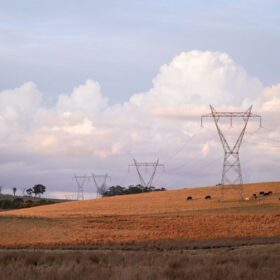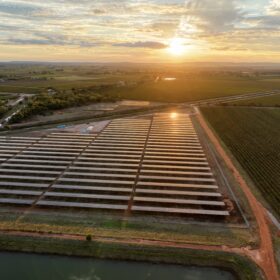Developed over seven months of collaboration involving more than 50 organisations – including Clean Energy Council (CEC) members, energy market bodies, network businesses, equipment manufacturers, developers and technical consultants – the Roadmap sets 11 priority reforms and implementation plans for these solutions.
Australian Energy Market Operator (AEMO) chief executive Daniel Westerman, said: “Australia’s energy transition continues its most extensive transformation in a century, driven by record investment in wind and solar generation.”
“The CRI has demonstrated a willingness across industry to collaborate and co-design reforms that address current challenges experienced with projects connecting to the grid.
“The endorsed roadmap delivers a reform package that will make it easier and more efficient to connect renewable generation and battery storage projects to the NEM, which importantly creates a more stable investment environment.”
These reforms relate to various stages and inputs into the connection process, including information quality and modelling standards, assessment studies, access standards, and other key elements of the process.
CEC analysis of Australia’s large-scale renewable development pipeline shows the private sector is ready to deploy $51.5 billion of investment through financially committed and under construction projects.
AEMO’s recently released Draft 2022 Integrated System Plan forecasts construction of nine times the NEM’s current utility-scale wind and solar generation capacity, from 15 GW to 140 GW, by 2050.
CEC chief executive Kane Thornton said that grid connection and network access has been the top concern of clean energy investors going back to at least 2019.
“While proponents are grappling with connection delays and the regulation that impedes their projects, you’re not fostering an environment that encourages the enormous capital that should be flowing into the Australian economy through clean energy projects,” he said.
“In developing the CRI Roadmap, industry has collectively worked towards solutions that will unlock the new generation investment required as old fossil-fuel generators retire or are priced out of the market and ultimately drive down energy costs for the consumer.
“It will also deliver enhanced grid outcomes, and provide developers with more timing certainty.”
Implementation on the reforms has been initiated, including reviewing selected minimum access standards, exploring options to advance batteries behind existing connection points, and a revised approach to updating AEMO’s Guidelines.






By submitting this form you agree to pv magazine using your data for the purposes of publishing your comment.
Your personal data will only be disclosed or otherwise transmitted to third parties for the purposes of spam filtering or if this is necessary for technical maintenance of the website. Any other transfer to third parties will not take place unless this is justified on the basis of applicable data protection regulations or if pv magazine is legally obliged to do so.
You may revoke this consent at any time with effect for the future, in which case your personal data will be deleted immediately. Otherwise, your data will be deleted if pv magazine has processed your request or the purpose of data storage is fulfilled.
Further information on data privacy can be found in our Data Protection Policy.